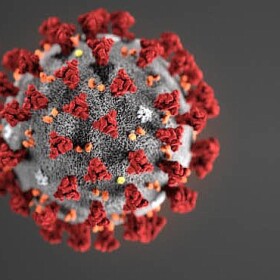San Diego’s border region is being pummeled every day by massive cross-border flows of sewage-tainted water.
Imperial Beach Mayor Serge Dedina looked at the river flowing through a South County valley on a recent morning.
“This should be dry — dry weather. This should be dry,” Dedina said as he looked at the flowing water. “There should be a pump station on.”
The water flowing in the Tijuana River Valley comes from Mexico and it is on its way to the ocean. On this day, 27 million gallons of sewage-tainted water, which also carries a slurry of toxic chemicals, runs untreated into the United States.
“The smells for residents of south San Diego have been off the charts,” Dedina said.
Some days the flows hit 50 million gallons. And this has been happening daily since November. Some weeks, 350 million gallons of dirty and dangerous water flows across the border.
RELATED: California Wants Feds To Address Cross-Border Sewage
“We’ve been literally freaking out about the astronomical increases of sewage and then the absolute absence of any communication from authorities in Mexico and then the International Boundary and Water Commission. Or even the EPA,” Dedina said
KPBS reached out several times to the International Boundary and Water Commission seeking information, but the agency has not answered any questions.
Observers said it is clear that Mexico’s overtaxed sewage system is collapsing. Pump stations and collectors are offline for repairs and Dedina is concerned that the cross-border flows may persist for months.
The ongoing environmental disaster got some attention from County Supervisor Greg Cox during his state of the county address a couple of weeks ago.
“Because of topography and a failure to maintain infrastructure in Mexico,” Cox said, “Imperial Beach has been subjected to torrents of sewage since the 1930s. The Tijuana River and the tributary canyons are the major sources of untreated sewage, trash, sediment and hazardous toxins.”
RELATED: Federal Money May Soon Help With San Diego’s Cross Border Pollution Woes
But Cox sounded an optimistic tone and he insisted he is confident this is the time to fix the problem.
“We’re closer than ever to solving this problem and I will fight tooth and nail over the coming year to make that happen,” Cox said.
Cox and other local leaders are pinning their hopes for a long-term solution on a $425 million diversion and treatment facility on the U.S. side of the border.
A berm would capture the polluted cross-border flows and an expanded treatment plant would clean it up.
“We think there is an ample opportunity for us to make substantial investments on the U.S. side of the border that get results,” said David Gibson, executive director of the Regional Water Quality Control Board.
Gibson runs the state agency that monitors water pollution in San Diego and he pointed out that both the federal and state governments are making money available to fix the problem.
RELATED: Protesters Gather At Mexican Consulate, Demand End Of Cross Border Sewage Spills
But that money can only be spent on projects in the United States.
“Those solutions work,” Gibson said. “Investments in Tijuana are often inadequate in the first place, poorly maintained and there’s no capital improvement budget to expand or improve upon them as they age out. So we’re looking at this from the perspective of putting good money after good money in the U.S., as opposed to making long-term investments in Mexico that don‘t pay off.”
But the fate of that project designed to stop most of the cross border flows rests in the hands of the Environmental Protection Agency.
The EPA controls the $300 million set aside as part of the United States, Mexico, and Canada trade agreement.
The federal agency has publicly expressed willingness to back the capture and treat option, but there is no official commitment.

Gibson said the forces have aligned, much like they did in the 1990s when the International Waste Water Treatment Plant was built.
“Many of us forget, that we used to have 15 million gallons per day of raw sewage, every single day of the year in the Tijuana River,” Gibson said. “Construction of that treatment plant and canyon collectors changed that. We still have a pollution problem but we don’t have the same pollution problem. We’re at the same moment now in 2020 that we were in 1990. Investing in U.S. side solutions work. They get results.”
Meanwhile, the legal fight to compel the U.S. government to clean up the pollution has been on hold since late last year.
The groups agreed to stand down while efforts to find the money for a U.S. solution moved ahead. That makes the situation even more frustrating for Imperial Beach's Dedina, who is concerned about the health of the people living in his small beach town.
“It was great that we were kind of moving forward,” Dedina said. “But at the same time, we got hammered by a tsunami of sewage and the federal government, the minute we stayed the lawsuit, stopped communicating with us, which is unacceptable.”







